
How to Use XIAO CAN Bus Expansion Board: Examples, Pinouts, and Specs
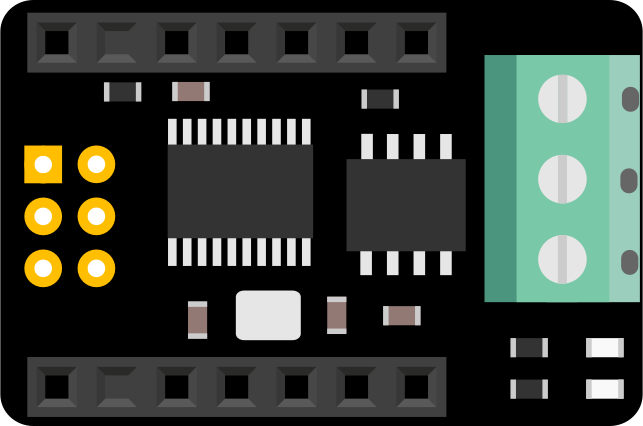
 Design with XIAO CAN Bus Expansion Board in Cirkit Designer
Design with XIAO CAN Bus Expansion Board in Cirkit DesignerIntroduction
The XIAO CAN Bus Expansion Board is a compact and versatile add-on designed for the XIAO series microcontrollers. It enables seamless communication over the CAN (Controller Area Network) protocol, which is widely used in automotive, industrial, and embedded systems. This expansion board is ideal for applications requiring robust and reliable communication between multiple devices in a networked environment.
Explore Projects Built with XIAO CAN Bus Expansion Board
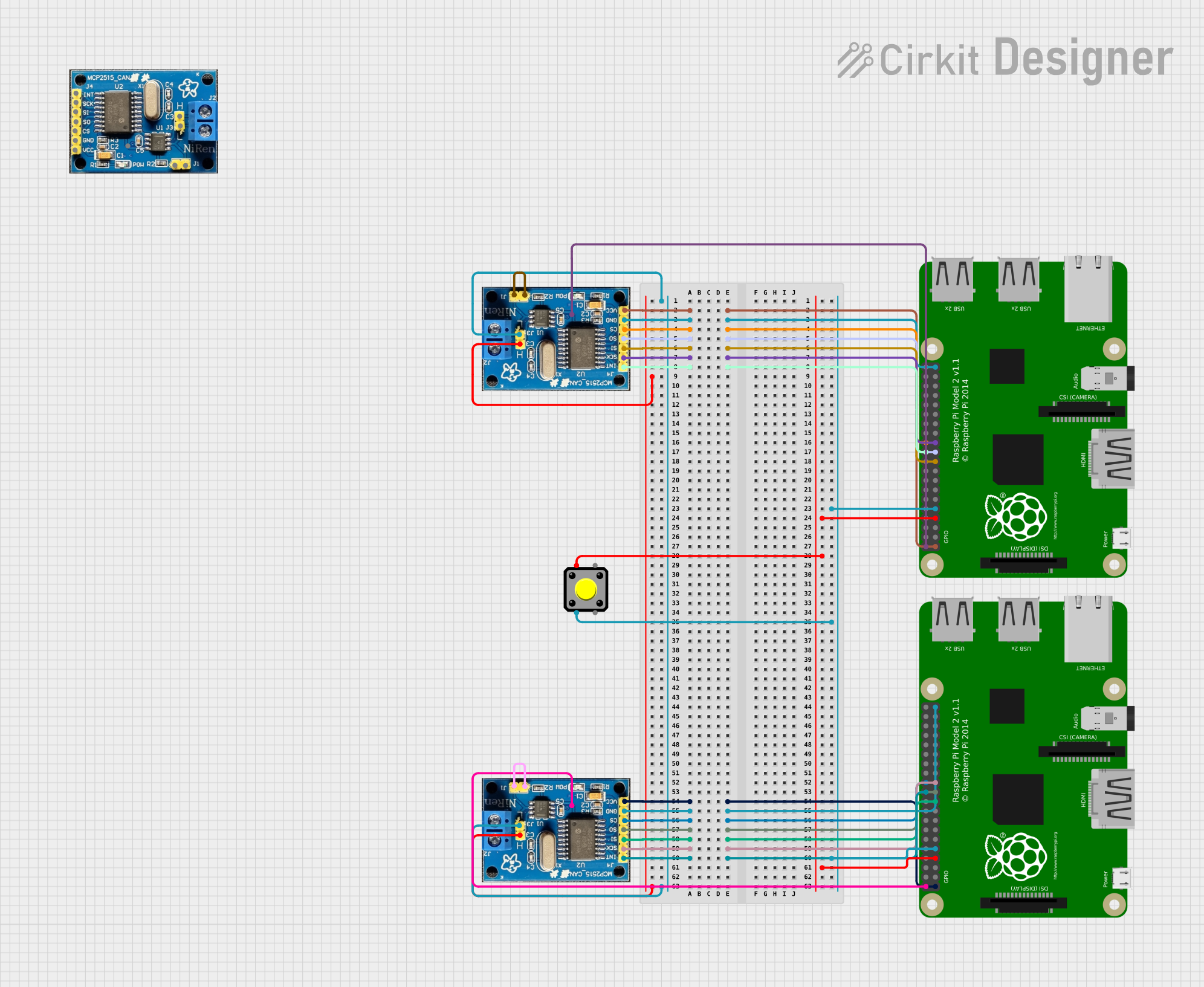
 Open Project in Cirkit Designer
Open Project in Cirkit Designer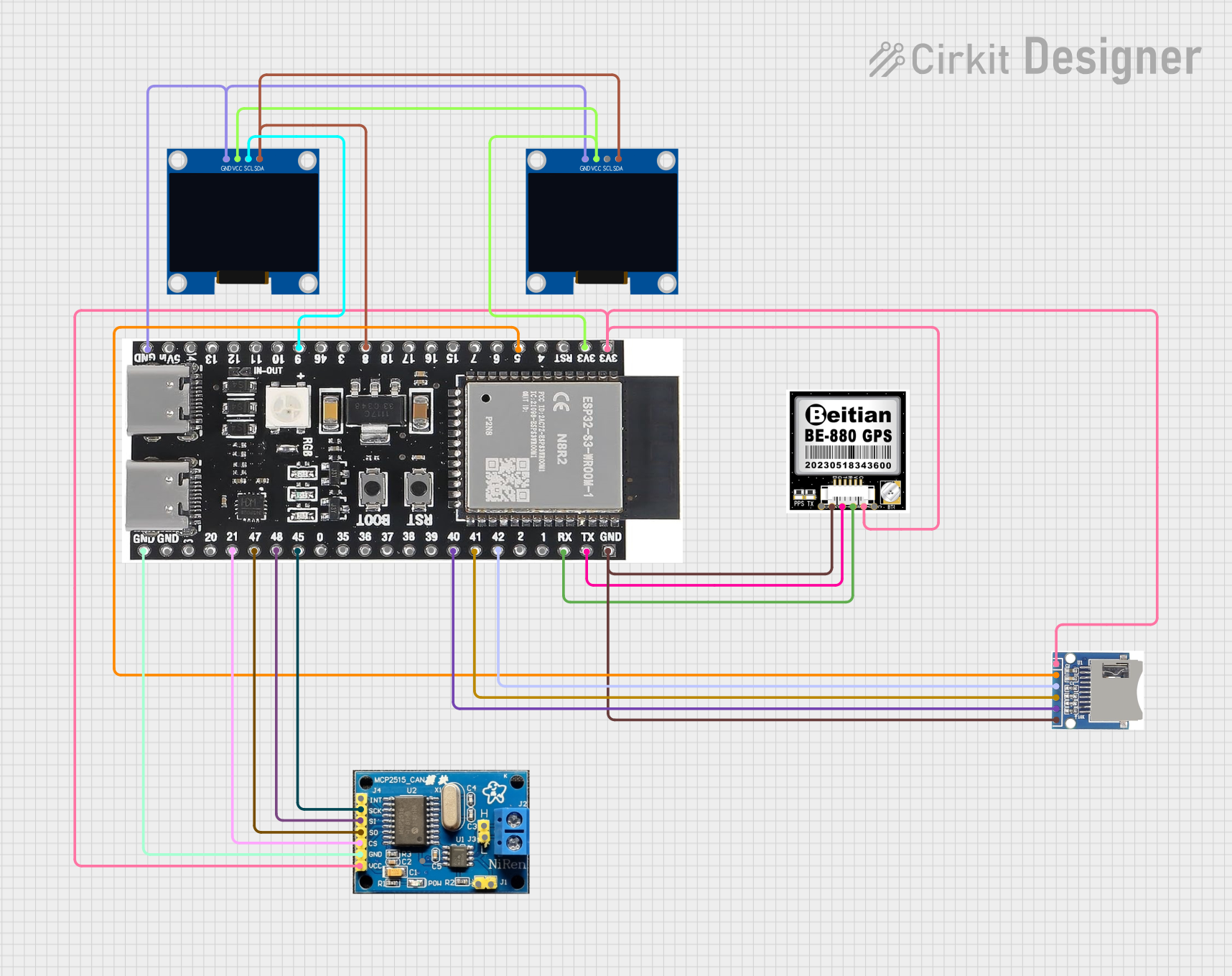
 Open Project in Cirkit Designer
Open Project in Cirkit Designer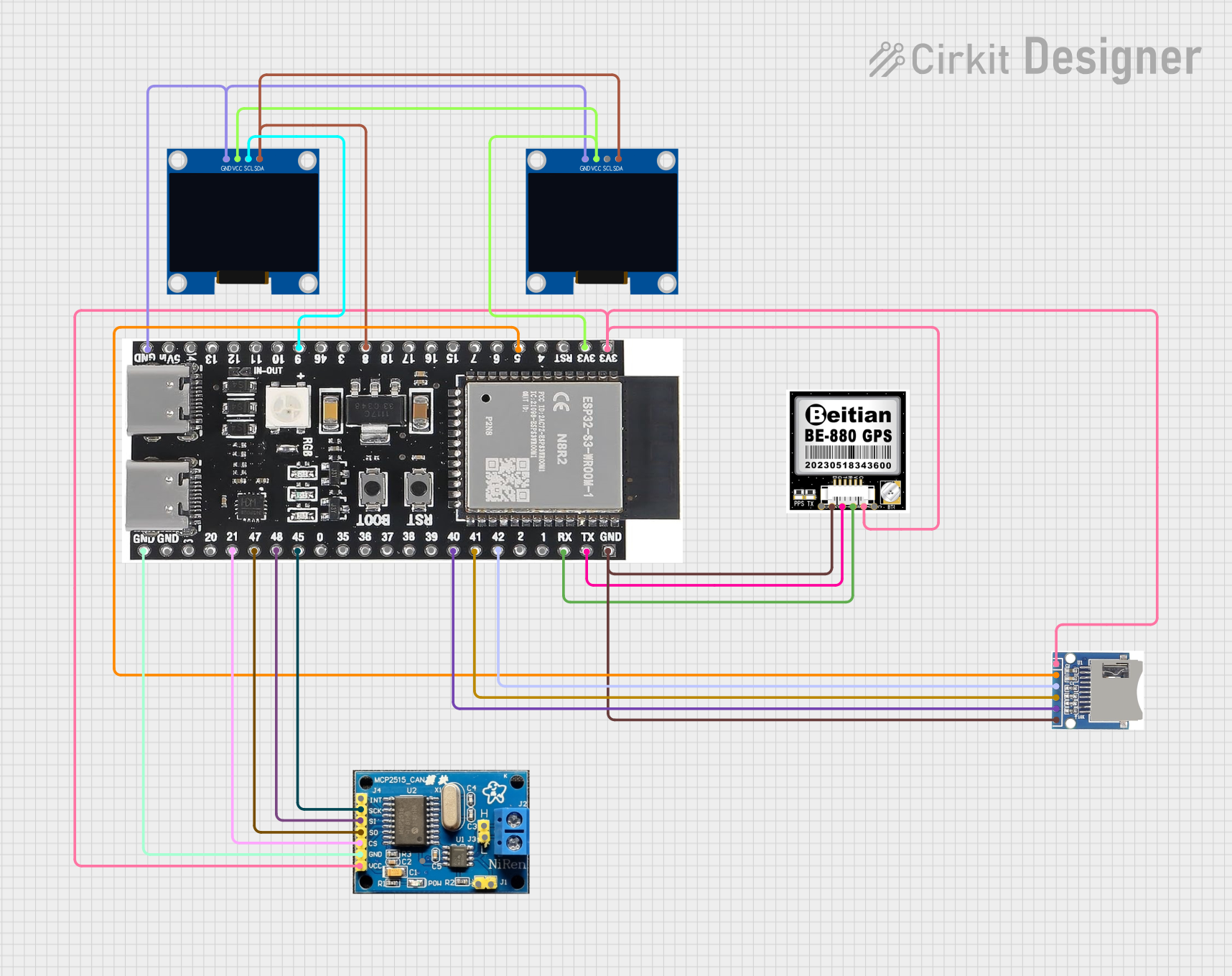
 Open Project in Cirkit Designer
Open Project in Cirkit Designer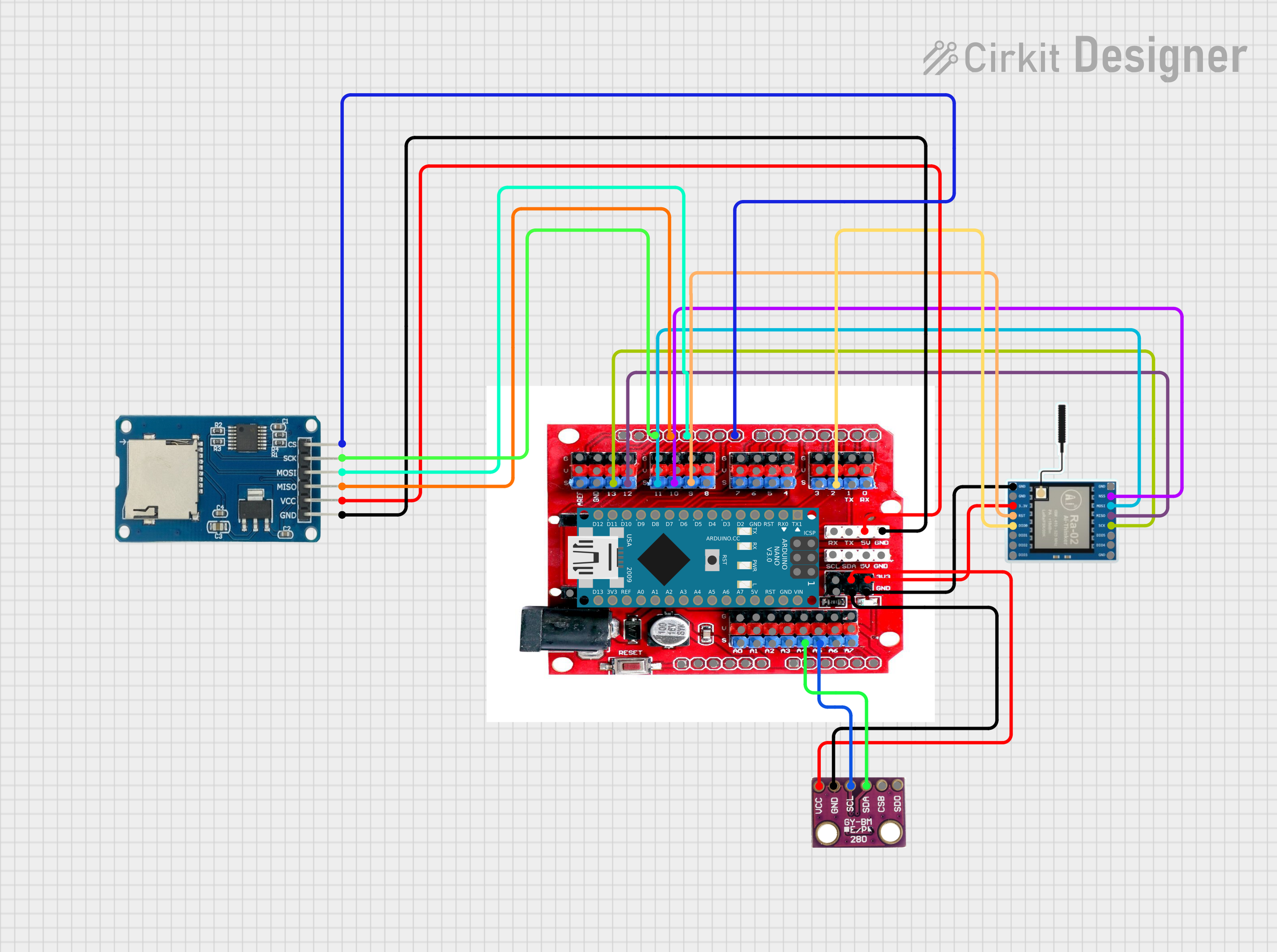
 Open Project in Cirkit Designer
Open Project in Cirkit DesignerExplore Projects Built with XIAO CAN Bus Expansion Board

 Open Project in Cirkit Designer
Open Project in Cirkit Designer
 Open Project in Cirkit Designer
Open Project in Cirkit Designer
 Open Project in Cirkit Designer
Open Project in Cirkit Designer
 Open Project in Cirkit Designer
Open Project in Cirkit DesignerCommon Applications and Use Cases
- Automotive systems (e.g., engine control units, sensors, and actuators)
- Industrial automation and control systems
- Robotics and IoT devices requiring CAN communication
- Data logging and diagnostics in CAN-based networks
Technical Specifications
Key Technical Details
- Operating Voltage: 3.3V or 5V (compatible with XIAO microcontrollers)
- Communication Protocol: CAN 2.0A/2.0B
- CAN Transceiver: MCP2551 or equivalent
- Baud Rate: Up to 1 Mbps
- Connector: Standard 3-pin CAN terminal (CAN_H, CAN_L, GND)
- Dimensions: 21mm x 17.5mm (compact design)
- Operating Temperature: -40°C to 85°C
Pin Configuration and Descriptions
The XIAO CAN Bus Expansion Board connects directly to the XIAO microcontroller via its pin headers. Below is the pin configuration:
| Pin Name | Description |
|---|---|
| CAN_H | High line of the CAN bus |
| CAN_L | Low line of the CAN bus |
| GND | Ground connection for the CAN bus |
| VCC | Power supply (3.3V or 5V) |
| RX | CAN data receive pin (to XIAO RX) |
| TX | CAN data transmit pin (to XIAO TX) |
Usage Instructions
How to Use the Component in a Circuit
Hardware Setup:
- Mount the XIAO microcontroller onto the XIAO CAN Bus Expansion Board.
- Connect the CAN_H, CAN_L, and GND terminals to the corresponding lines of the CAN bus.
- Ensure the power supply (VCC) matches the operating voltage of the XIAO microcontroller (3.3V or 5V).
Software Setup:
- Install the required CAN library for your development environment (e.g., Arduino IDE).
- Configure the CAN baud rate and initialize the CAN bus in your code.
Example Circuit:
- Connect the XIAO CAN Bus Expansion Board to a CAN network with at least one other CAN device.
- Use a 120-ohm termination resistor at both ends of the CAN bus for proper signal integrity.
Important Considerations and Best Practices
- Ensure the CAN bus is properly terminated with 120-ohm resistors at both ends.
- Use twisted-pair cables for CAN_H and CAN_L to minimize noise and signal interference.
- Verify the baud rate and CAN ID settings match across all devices on the CAN network.
- Avoid exceeding the maximum voltage and current ratings to prevent damage to the board.
Example Code for Arduino UNO
Below is an example code snippet to initialize and send data over the CAN bus using the XIAO CAN Bus Expansion Board:
#include <mcp_can.h> // Include the MCP CAN library
#include <SPI.h> // Include the SPI library
// Define the SPI CS pin for the XIAO CAN Bus Expansion Board
#define CAN_CS_PIN 10
MCP_CAN CAN(CAN_CS_PIN); // Create an MCP_CAN object
void setup() {
Serial.begin(115200); // Initialize serial communication for debugging
while (!Serial);
// Initialize the CAN bus at 500 kbps
if (CAN.begin(MCP_ANY, 500000, MCP_8MHZ) == CAN_OK) {
Serial.println("CAN bus initialized successfully!");
} else {
Serial.println("Error initializing CAN bus.");
while (1);
}
CAN.setMode(MCP_NORMAL); // Set CAN bus to normal mode
Serial.println("CAN bus is in normal mode.");
}
void loop() {
// Example data to send over the CAN bus
byte data[8] = {0x01, 0x02, 0x03, 0x04, 0x05, 0x06, 0x07, 0x08};
// Send data with CAN ID 0x100
if (CAN.sendMsgBuf(0x100, 0, 8, data) == CAN_OK) {
Serial.println("Message sent successfully!");
} else {
Serial.println("Error sending message.");
}
delay(1000); // Wait 1 second before sending the next message
}
Troubleshooting and FAQs
Common Issues and Solutions
Issue: CAN bus communication is not working.
- Solution: Verify the wiring of CAN_H, CAN_L, and GND. Ensure proper termination resistors are in place.
Issue: The XIAO microcontroller is not detecting the CAN Bus Expansion Board.
- Solution: Check the connection between the XIAO microcontroller and the expansion board. Ensure the board is powered correctly.
Issue: Data is being sent but not received by other devices.
- Solution: Confirm that the baud rate and CAN ID settings match across all devices on the CAN network.
Issue: Noise or interference on the CAN bus.
- Solution: Use twisted-pair cables for CAN_H and CAN_L. Ensure proper grounding of the system.
FAQs
Q: Can I use the XIAO CAN Bus Expansion Board with other microcontrollers?
- A: The board is specifically designed for the XIAO series, but it may work with other microcontrollers that have compatible pinouts and CAN libraries.
Q: What is the maximum cable length for the CAN bus?
- A: The maximum length depends on the baud rate. For example, at 1 Mbps, the maximum length is approximately 40 meters.
Q: Do I need to install any additional drivers for the XIAO CAN Bus Expansion Board?
- A: No additional drivers are required. However, you need to install the MCP CAN library in your development environment.
Q: Can I use the board in high-temperature environments?
- A: Yes, the board operates within a temperature range of -40°C to 85°C, making it suitable for automotive and industrial applications.